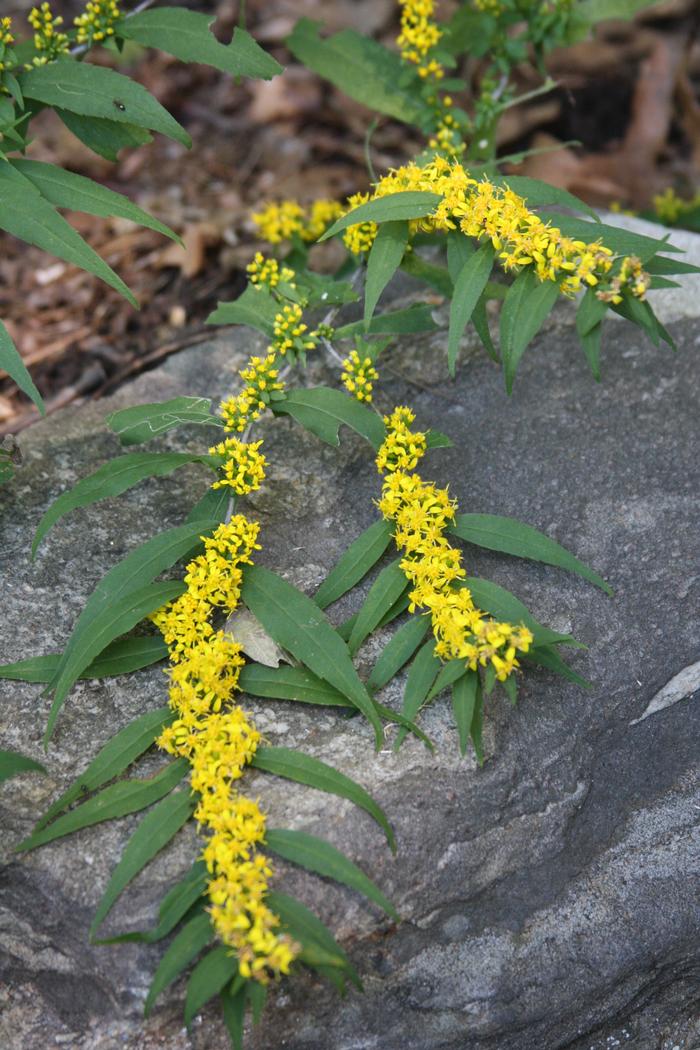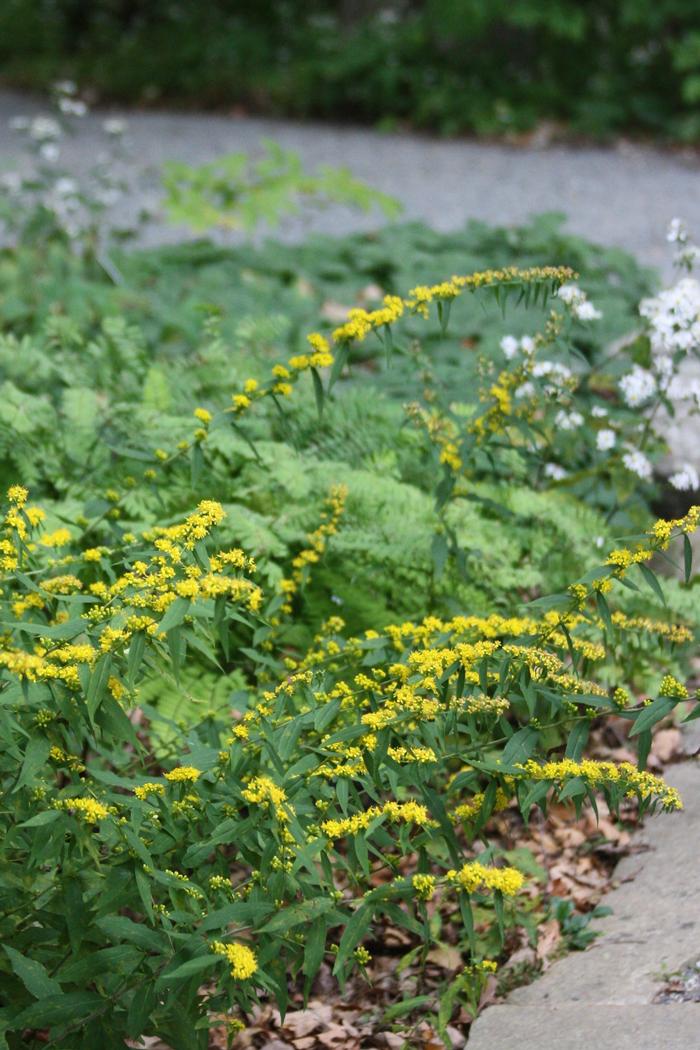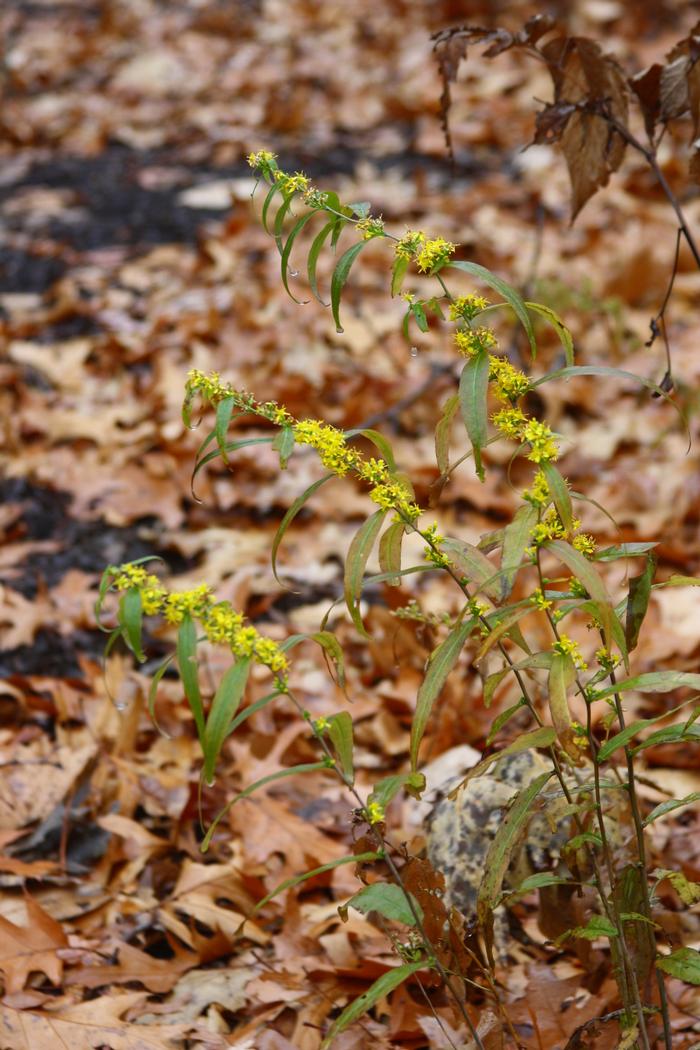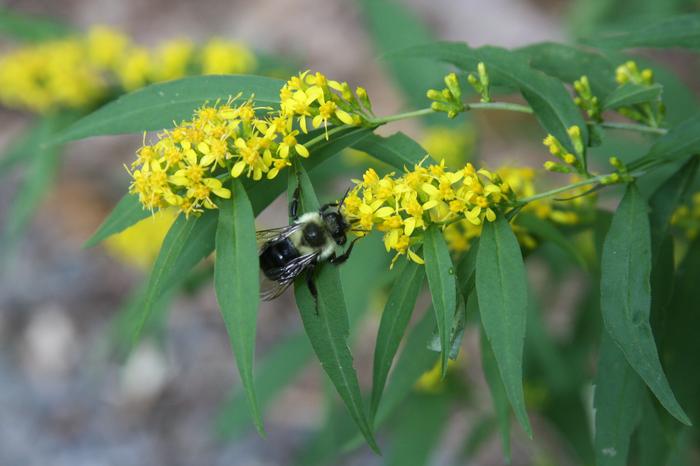General Description
Bloom Description: Small yellow flowers emerge out of the axils between the leaf node and stem, all along the length of the stem. Individual flowers contain ray and disc flowers typical of the sunflower family, with 3-4 rays per head.
Growth Habit & Shape: Graceful arching blue/purple stems with a white bloom emerge out of distinct clumps, sometimes trailing along the ground as they become heavy with flowers. The clumps of flowers along the stem and serrated lanceolate leaves give a feathery textured and wreath-like effect.
Soil Preferences: Found mostly in slightly acidic well-drained loamy or rocky soils that are average to dry. Will tolerate mesic and clay soils as well as drought.
Root Description: Fiberous roots.
Garden Uses: Visually effective in groupings or masses in shade and open woodland gardens, perennial borders and cottage gardens, rain gardens, wildlife or pollinator gardens, on steep slopes and roadside restorations.
Best Management & Maintenance: If growing in dense shade plants may need to be pruned in late spring or early summer to prevent flopping and promote bushier upright growth. Flopping plants can also be staked.
Common Problems: Occasionally rust will affect the leaves, but otherwise this plant is relatively disease free.
Benefits
Ornamental Value: Amazing late-season pop of color in shadier spots.
Wildlife Benefits: Flowers attract bees, wasps, and flies as nectar and pollen seeking pollinators. Songbirds forage on the seed in fall and winter. A known 125 species of butterflies and moths use the Solidago genera as a larval host plant. Some include: the goldenrod hooded owlet, brown-hooded owlet, green leuconycta, wavy-lined emerald, beautiful phaneta, and bilobed dichomeris moth.
Other Practical/Environmental Benefits: Drought and shade tolerant.
Use in place of: Chrysanthemum grandiflorum and cultivated varieties.
Ecology
Habitat:
Found in open oak and deciduous woodlands or forest edges, along slopes, ravines, bluffs, and rocky cliffs.
Response to Disturbance: Can handle browsing and cutbacks earlier in the season.
Native State Distributions:
Canada: CA: NB, ON, QC
USA: US: AL, AR, CT, DE, FL, GA, IL, IN, KY, LA, MA, MD, ME, MI, MO, MS, NC, NH, NJ, NY, OH, OK, PA, RI, SC, TN, TX, VA, VT, WI, WV
Wetland indicator status: FACU: Usually occurs in non-wetlands, but occasionally in wetlands.
Companion Plants:
Symphyotrichum cordifolium (blue wood aster), Eurybia divaricata (white wood aster), Carex plantaginea (plantain-leaved sedge), Aquilegia canadensis (wild columbine), Dryopteris intermedia (evergreen wood fern), Scutellaria serrata (showy skullcap)
References
Return to Top




